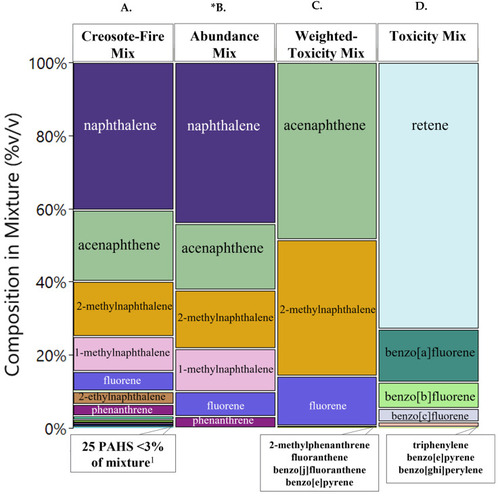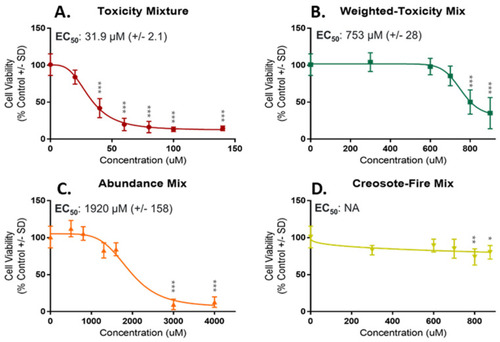- Title
-
Leveraging Multiple Data Streams for Prioritization of Mixtures for Hazard Characterization
- Authors
- Rivera, B.N., Ghetu, C.C., Chang, Y., Truong, L., Tanguay, R.L., Anderson, K.A., Tilton, S.C.
- Source
- Full text @ Toxics
|
Chemical Composition of Mixtures. Chemicals greater than 3% |
|
Comparison of Empirically Derived vs. QSAR Predicted Toxicity Values. Predicted RfD and RfC values were within the same magnitude as empirically derived values. IUR predictions were also within the same magnitude as empirical values. OSF had the largest difference between empirical and predicted values, which seemed to be associated with increasing molecular weight. *—empirically derived values. Reference Dose (RfD); Reference Concentration (RfC); Oral Slope Factor (OSF); Inhalation Unit Risk (IUR). |
|
Correlations of Toxicity Metrics. ( |
|
Concentration-Response Curves for Mitochondrial Membrane Potential in NHBE. Curves are in order of decreasing potency based on predicted EC50 values. ( |
|
Concentration-Response Curves for Cell Viability in NHBE. Curves are in order from high to low potency based on predicted EC50 values. ( |
|
Concentration-Response Curves for Mortality and Any Effect in Zebrafish. ( |






